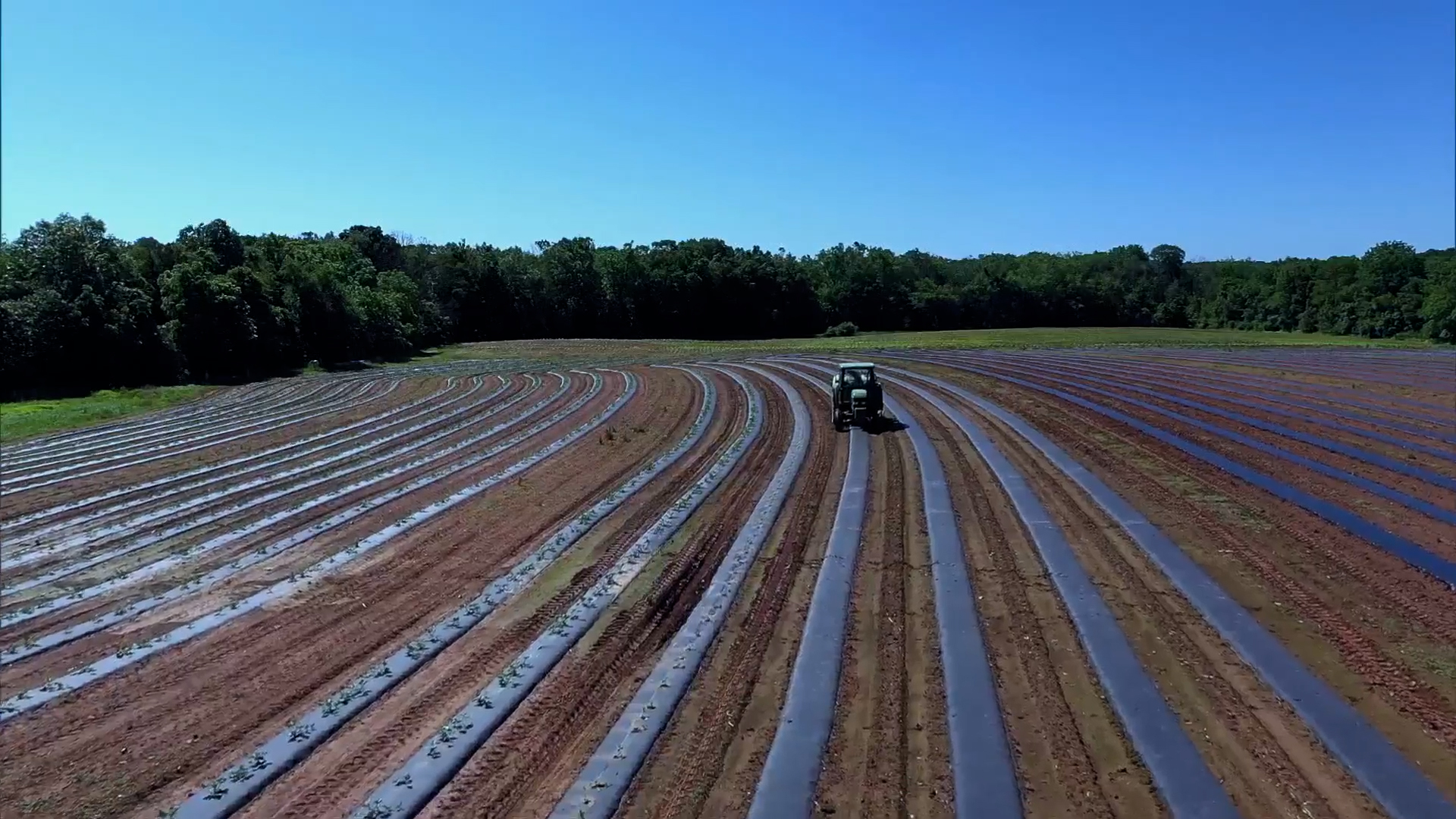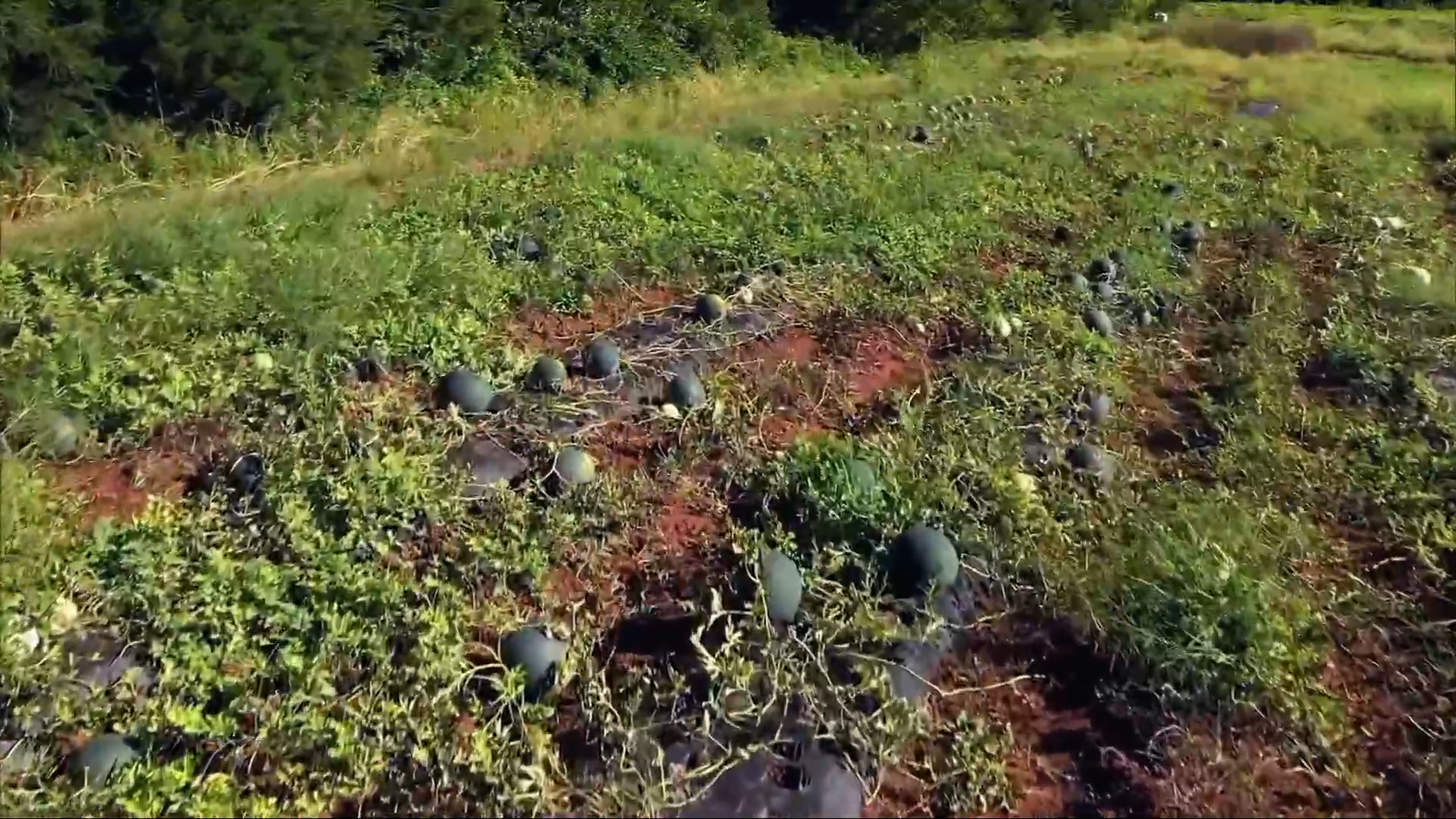Explore

Foxleigh farm after seedless watermelon planting
Seedless Watermelons
Seedless watermelons are the most purchased variety in the U.S. Growing them is an expensive and complicated process. Seedless watermelons are not genetically modified. Instead, they are a hybrid species.
The Foxleigh Farm manages over 100 acres of grain and 60 acres of produce. Because watermelons mature at different rates, the farmers at Foxleigh have five different plantings throughout spring. Planting consecutively, or one after the other, allows the watermelons to be harvested, or picked, for an extended amount of time throughout the season.
Farmers are able to grow seedless watermelons because of conventional plant breeding that creates the hybrid watermelon plant. This breeding process is when a watermelon with two sets of chromosomes is crossbred with a watermelon that has four sets of chromosomes. The resulting seeds will have three chromosomes. This odd number of chromosomes makes the fruit seedless when they are grown, which, in turn, means they can’t reproduce.
These plants are pre-grown in a greenhouse so that they can be germinated under special growing conditions. The flowers on a seedless watermelon plant still need to be pollinated by a seeded pollinator plant. During planting, the seeded (male) plant, also known as the pollinator plant, is planted at the same time as the seedless (female) plant. Birds, bees, and other insects then assist in cross-plant pollination. This combination of the genetic information of two plants is a type of sexual reproduction. Seedless watermelons might also be grown with asexual reproduction by grafting a seedless plant onto a seeded one.

Foxleigh farm at seedless watermelon harvest
The watermelon plants are approximately three inches tall when the Foxleigh farmers get them. The farmers plant rows eight feet apart, with plants three feet apart in each row. If planted too close together the plants can destroy one another. Most watermelons are grown on farms because they require a lot of space. Their vines could get tangled and cause the plant to stop growing. Watermelon vines can grow from 6-20 feet long. The average watermelon vine grows to be 12 feet long. The plastic mulch is three to four inches higher than ground level and acts like a bed, helping to reduce disease and suppress weeds. The melon fruits start at the size of a marble and, within 30 days, they’re the same size as what we see in grocery stores, farmer’s markets, and fruit stands. (The male watermelon plants are generally used for breeding and not eating, though their fruit is safe to eat.) Watermelons should be eaten within 2-3 weeks after harvest. Some characteristics of a high quality watermelon are sugar content, deep red color, and crisp texture of the flesh of the fruit. Watermelons that are sold to stores are harvested when mature, but before full ripeness, to minimize the number that may be damaged or over ripened. Watermelons are sensitive to high levels of ethylene, which is a gas given off by ripening fruit. During storage watermelons should not be stored or shipped with fruits that give off high levels of ethylene such as apples, apricots, avocados, peaches, and pears. All melons will rot if left on the ground too long.
Some benefits of a seedless watermelon are:
- A seedless watermelon lasts longer. Typically, the flesh of the fruit around the seed usually ripens first; since there are no seeds, this does not take place as quickly.
- Each seedling produces 4-5 watermelons.








